Scientists Reveal Ancient Chinese Empire Unearthed After 2,000 Years
In 1974, a group of Chinese farmers uncovered an extraordinary finding while digging a well. Unbeknownst to them, they had stumbled upon the world’s most extensive necropolis, which had remained buried for more than two millennia.
This necropolis was the final resting place of the first emperor of China, Qin Shi Huang. Inside the tomb, archaeologists discovered 8,000 life-sized statues, a palace, a pyramid, and many valuable artifacts. However, even after fifty years of exploration, archaeologists have only managed to investigate 1% of the site.
Unearthing Ancient Artifacts
One morning in Xi’an, China, on March 29th, 1974, Yang Zhifa and his five siblings were excavating a well near a mountain. To their surprise, they arrowheads, terracotta bricks, and red pottery about six feet below. Although the villagers reused the terracotta bricks, Zhifa decided to sell the arrowheads.

Source: Getty Images
However, that May, a group of archaeologists from the Shaanxi province reached the well site, too. They proceeded to conduct further excavation work in the surrounding area, which would later be recognized as the initial site for excavation.
A Secret Tomb Concealed for 2,200 Years
The excavation of pit one alone took archaeologists two years to complete. Afterward, in May 1976, they commenced work on the second and followed up with the third pit in June of that year. By the end, the archaeologists had successfully unearthed over 60,000 square feet of an age-old burial ground.
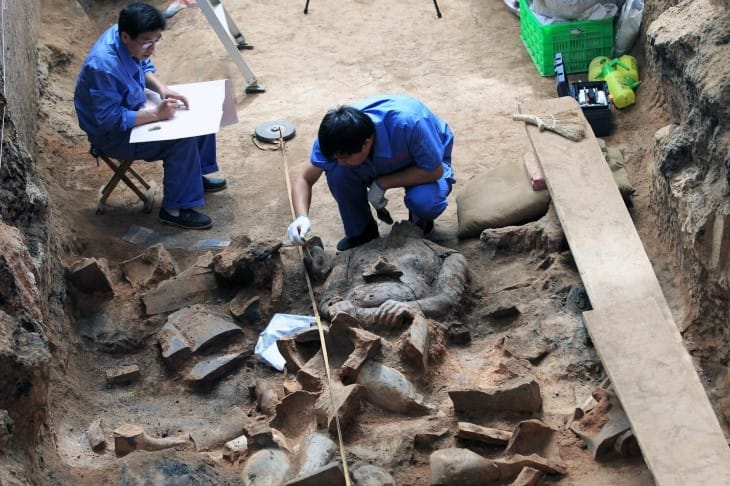
Source: Getty Images
Upon analysis, historians concluded that the location was none other than the tomb of the inaugural Chinese emperor Qin Shi Huang. What was more exciting was that the site was brimming with over 8,000 life-sized clay soldiers, each intricately crafted.
China’s First Emperor
Qin Shi Huang was the first emperor of China who ruled from 221 BC until 210 BC. He founded the Qin dynasty and was renowned for his extensive public works projects, including the construction of the Great Wall of China.
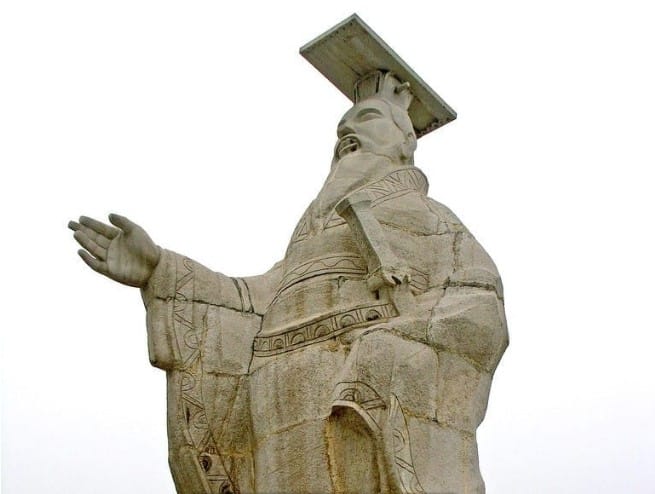
Source: Flickr
Unfortunately, archaeologists had been unable to locate Qin Shi Huang’s tomb, despite having uncovered the burial sites of numerous other Chinese rulers. That was the case, however, until 1974.
Many Say Qin Was a Harsh Ruler
While Qin Shi Huang oversaw many advancements during his reign, his reputation was marred by cruelty. He frequently ordered the executions of Confucian scholars who held opposing views.
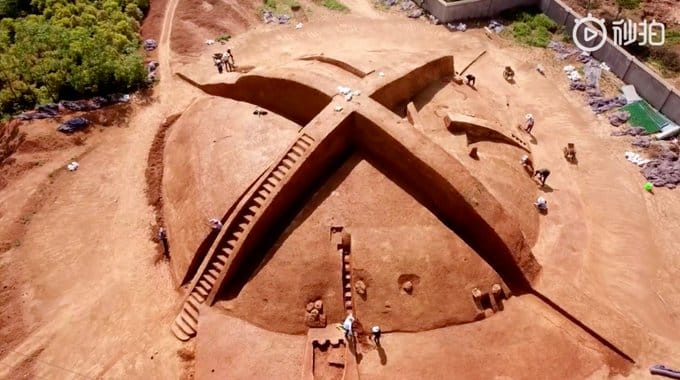
Source: @xbao_ck/ Twitter
Additionally, he demonstrated little regard for the safety and well-being of his workers, with many laborers and artisans perishing while constructing his tomb. The tomb contains a sacrificial altar, which historians speculate was used by Qin to sacrifice laborers to ward off potential robbers.
A Tomb Made by a Kingdom
The construction of Qin Shi Huang’s tomb began during his youth before he became emperor. Upon becoming Qin’s ruler at the age of 13, Qin Shi Huang began devoting his attention to constructing his mausoleum, which took an estimated 38 years to finish.
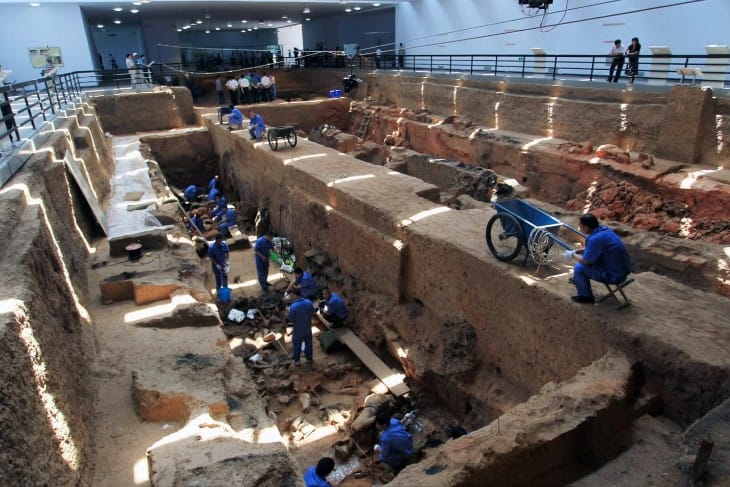
Source: Getty Images/ STR/AFP
Astoundingly, he had a labor force of approximately 700,000 working on his tomb. The work on the tomb persisted many years after the emperor’s passing, remaining concealed from view for more than two centuries.
However, in 1975, the Race Was On
In 1975, archaeologists intensified their efforts to excavate the tomb. During their excavation, they revealed several significant discoveries, including stables, storehouses, sacrificial altars, and more.
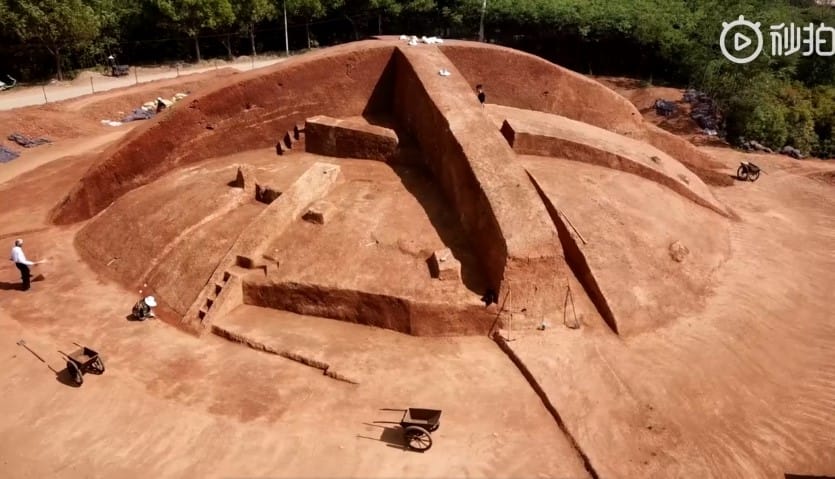
Source: hoaxorfact.com
They eventually discovered four significant burial pits. Within the pits, they found Qin Shi Huang’s tomb alongside 2,000 statues. This discovery was the first of many more years of research and excavation that would help these archaeologists discover more treasure.
To This Day, Archaeologists Have Only Uncovered 1% of the Tomb
Because the scale of the monument is so immense, experts have only uncovered a mere 1% of it. Utilizing advanced 3D volumetric scanners, however, archaeologists determined that the burial site covers an area of over six million cubic feet.

Source: Getty Images
The enormous scale of this tomb is evident when comparing its size to one of China’s most renowned landmarks, Beijing’s Forbidden City. To put it in perspective, the tomb is a quarter of its size.
Experts Are Still Unsure Why the Statues Were Created
The exact reason for Qin Shi Huang’s creation of the terracotta soldiers remains a mystery to historians. However, many experts believe that the soldiers were created for guarding and protecting the emperor’s tomb in the afterlife.
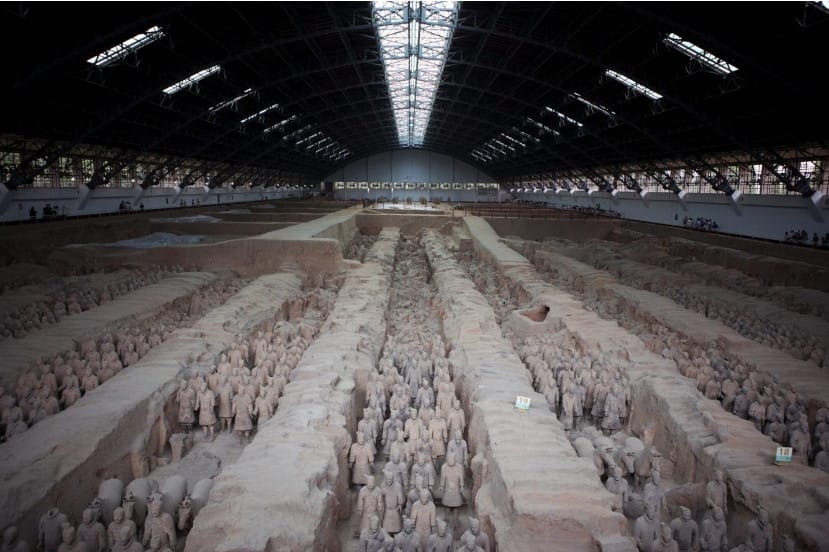
Soruce: Ryan Pyle Corbis/ Getty Images
It was a common belief among ancient people that life continued after death. It is believed that Qin may have wanted to ensure that all of his forces were present in the afterlife, as well.
At First, Archaeologists Feared Traps In Qin’s Tomb
Although ancient texts described elaborate traps within Qin Shi Huang’s tomb, including automatic arrows set to fire on intruders. However, modern experts like Emily Teeter have cast doubt on the veracity of these claims.
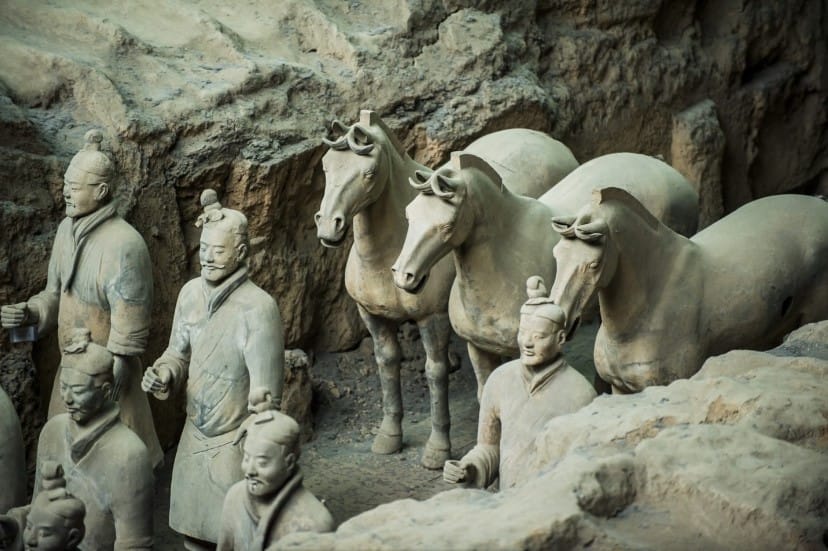
Source: studioEAST/ Getty Images
As curator of the University of Chicago’s Oriental Institute, Teeter noted that many of these stories are likely embellishments or legends passed down over the centuries. Thankfully, explorers don’t have to worry about giant rolling boulders.
However, That Doesn’t Mean The Tomb Wasn’t Expertly Crafted
It’s clear the builder took great care in designing the tomb. The arrangement of Qin Shi Huang’s mausoleum was not haphazard by any means, but rather intentional.
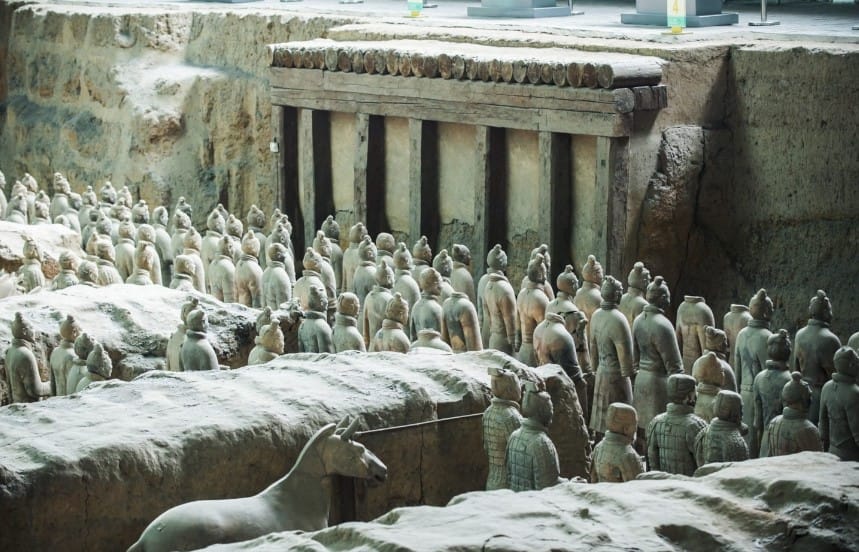
Source: StudioEAST/ Getty Images
In fact, the necropolis replicated the layout of Qin’s capital, Xianyang, featuring both inner and outer cities. A truncated pyramid-shaped mound measuring 250 feet in height – located in the southwest corner – serves as the final resting place of the emperor’s body.
One of These Design Characteristics Is Quite Terrifying
The burial site is home to rivers of mercury that flow throughout. The ancient Chinese believed that mercury granted immortality, which is why the tomb contains a moat of the substance installed intentionally by servants.
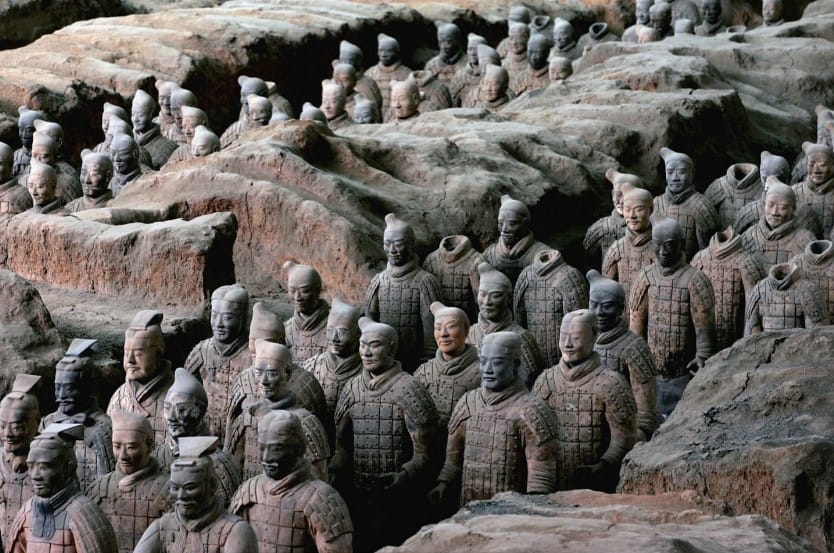
Source: Getty Images
These mercury rivers make exploration quite difficult. Some experts speculate that the tomb could hold treasures and clay statues depicting the emperor’s consorts, but searching for them hasn’t yielded any results.
Ironically Enough, Qin Shi Huang Ingested Plenty of Mercury Over His Lifetime
Qin Shi Huang, the first emperor of China, was obsessed with the pursuit of immortality. He is said to have sent out expeditions to search for the elixir of life and consulted with alchemists and magicians in his quest for eternal life.
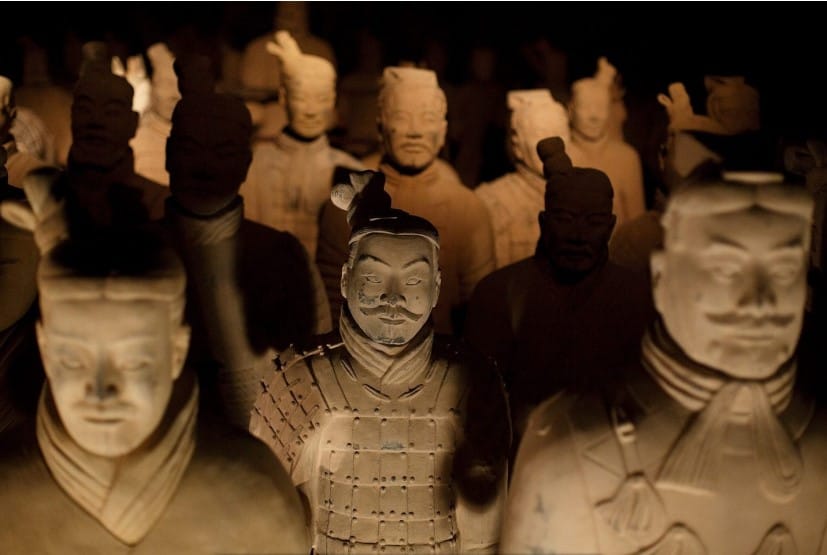
Source: Getty Images
Additionally, he was the one who ordered the construction of his mausoleum with the inclusion of rivers of mercury, which he believed would grant him immortality in the afterlife. Despite his efforts, Qin Shi Huang died in 210 BCE at the age of 50, likely from ingesting many mercury pills.
He Did, However, Create History’s First Assembly Line
Inside the tomb lies a vast collection of terracotta statues. Each statue is a unique masterpiece, with distinct facial and hair features.
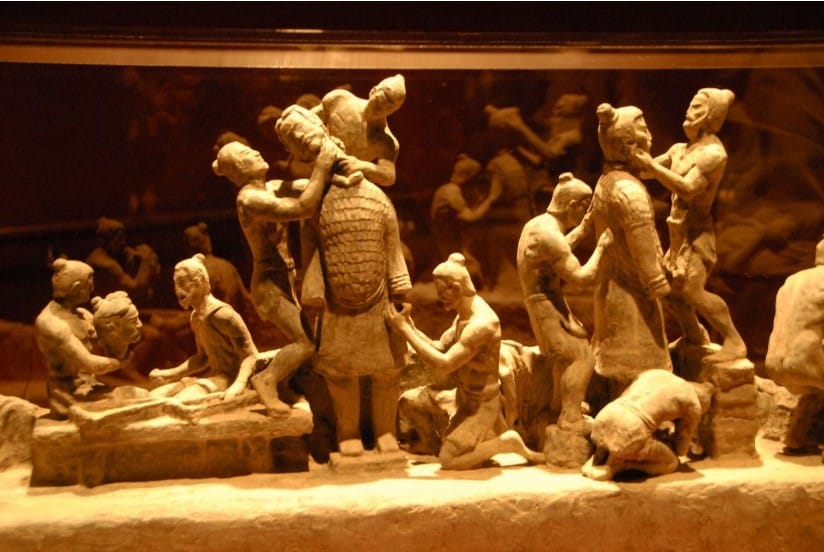
Source: Getty Images
According to historians, the creation of these terracotta statues was highly organized, resembling a modern-day assembly line. Each craftsman specialized in creating one specific part of the statue, such as the arms or the head, and then the parts were assembled before they were given their unique characteristics using clay.
Going Beyond Soldiers
The vast array of terracotta figures found in the tomb of Qin Shi Huang goes beyond just military personnel. In fact, you can find statues of government officials, concubines, acrobats, and musicians.
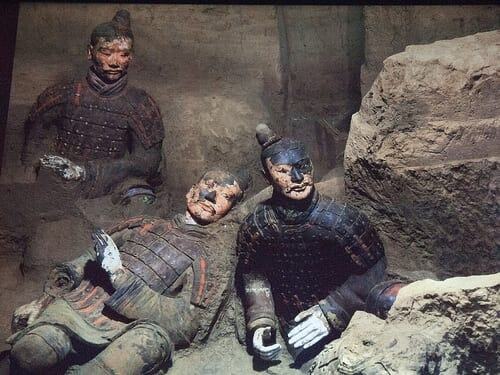
Source: Flickr
The level of detail and craftsmanship that went into creating the tomb’s sculptures is truly impressive. Artisans even fashioned terracotta waterfowl, such as cranes, ducks, and swans to accompany the emperor in the afterlife.
The Statues Were Crafted With a Unique Type of Clay
The terracotta statues discovered in Qin Shi Huang’s tomb were made from a specific type of clay known as “yellow earth” (found in large quantities throughout the surrounding area). Once the pieces were connected, and the details were carved, the artisans would fire the statues in a kiln until they hardened.
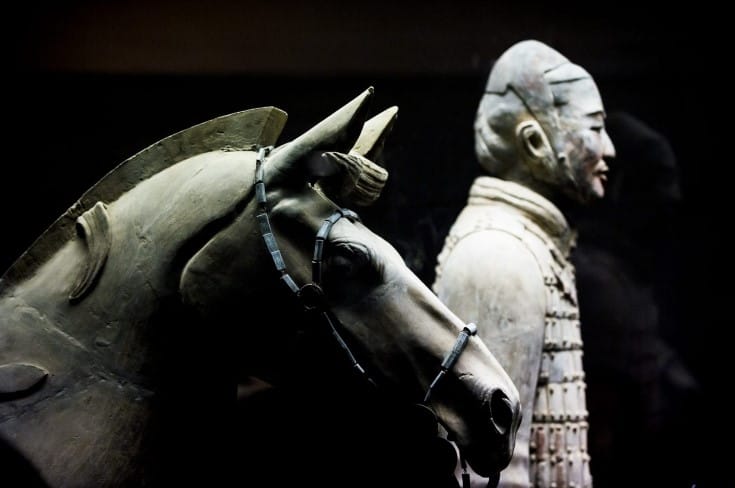
Source: studioEAST/ Getty Images
They would then carefully polish and paint the surface of each sculpture. It’s quite fascinating to think that each statue was made with the same raw material, yet the attention to detail resulted in completely distinct figures.
Unfortunately, the Exact Burial Site Remains Unexcavated
Despite knowing the exact location of Qin Shi Huang’s burial site, it remains unexcavated. According to curatorial consultant Kristin Romey, no modern technology is capable of properly excavating the site.
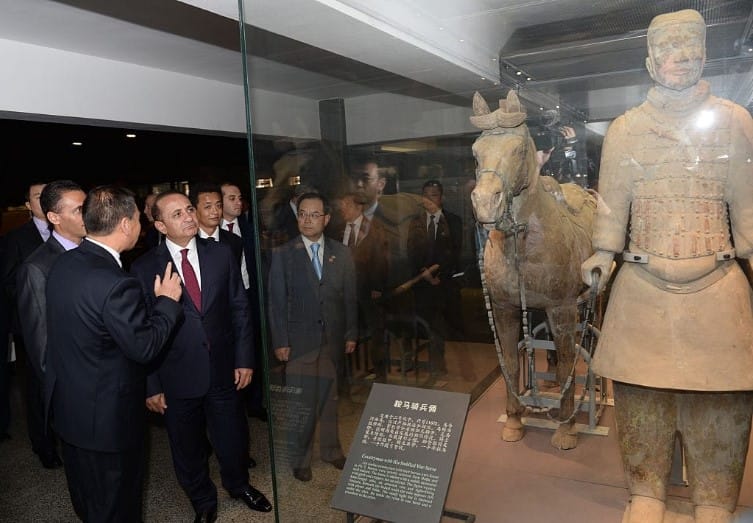
Source: Xinhua - Li Yibo/ Getty Images
The tragic consequences of the rushed excavation of King Tut’s tomb in the 1930s serve as a cautionary tale for archaeologists. The hurried digging efforts destroyed a great deal of historical information and precious artifacts.
The Chinese Government Wants to Hold Off Digging Too
As a result of the King Tut excavation, the Chinese government decided to hold off on excavating the tomb of Qin Shi Huang to prevent similar mistakes. While it is tempting to uncover the treasures buried within the emperor’s tomb, it is essential to do so with great care and precision.
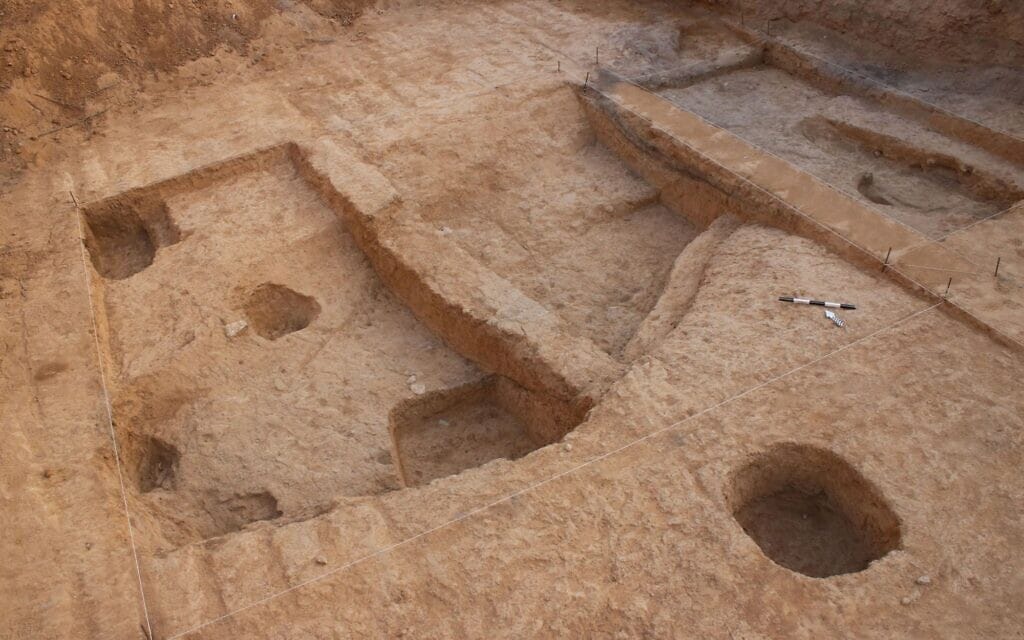
Source: Talia Abulafia - Israel Antiquities
By waiting until the proper technology and expertise are available, we can ensure that the tomb is explored thoroughly and respectfully. The last thing we’d want is to sacrifice any of the invaluable historical information it contains.
Some People Are Wondering Whether the Tomb Should Be Explored At All
The Chinese government expresses concern that the current level of technology is inadequate for conducting safe excavations. Preserving the integrity of ancient art and artifacts is a top priority, and they are wary of any potential damage that may occur.

Source: Getty Images/ Ryan Pyle- Corbis
On the contrary, some argue that there is an urgent need to explore the underground palace. They point out that the mausoleum is situated in an earthquake-prone area, and the artifacts may be destroyed by natural disasters or looting.
As Far As We Know Now, the Tomb Contains Three Vaults
The largest of the three is the first vault, which boasts over 6,000 terracotta statues. This vault is equivalent to the size of an airplane hanger. The second vault, in comparison, is smaller and features sculptures of chariots, cavalry, and archers.
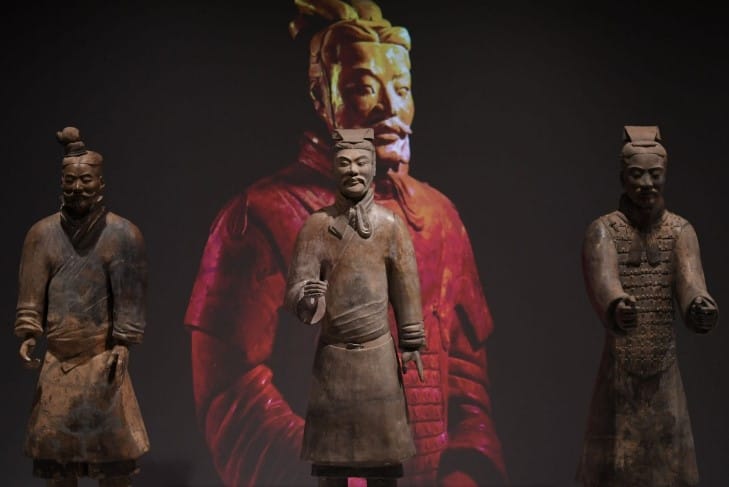
Source: Getty Images/ PAUL ELLIS/ AFP
The third and smallest vault of Qin’s tomb is referred to as the “command post.” Unlike the other two vaults, this section does not contain any terracotta soldiers.
There Is Also a Large Exhibition Hall
The exhibition hall showcases the various vehicles that Qin Shi Huang was believed to use in the afterlife. These chariots were meticulously crafted using 1,720 pieces of silver and gold.
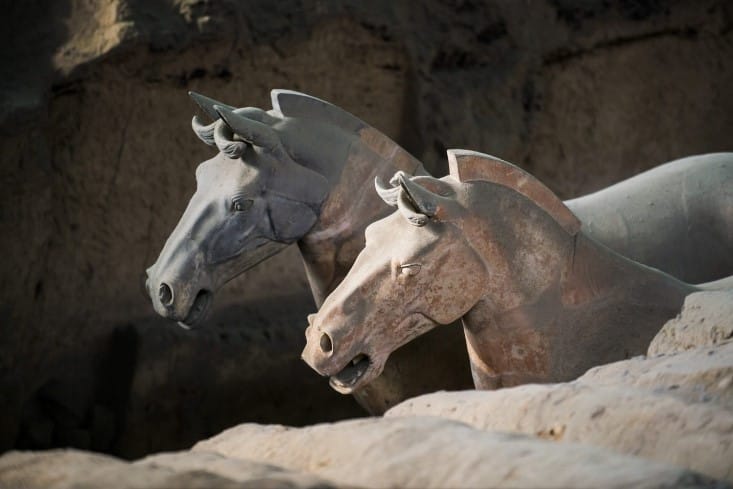
Source: Getty Images/ studioEAST
Each chariot within the exhibition hall comprises over 3,000 individual parts, weighing approximately 2,700 pounds. Highly skilled artisans were responsible for carving intricate details into the sculptures, such as umbrellas to shield the drivers.
The Realism Is The Truly Astounding Factor
These subterranean sculptures weren’t created arbitrarily. In fact, they were modeled after the actual army of the Qin dynasty, arranged in rows of nine, as if they were actively marching into battle.
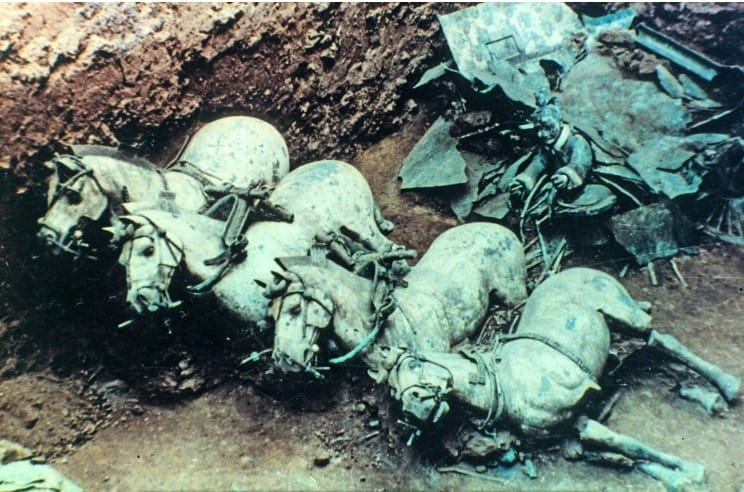
Source: Getty Images/ Peter Bischoff
It’s worth noting that rather than representing specific individuals, the terracotta warriors likely depicted various types of soldiers who served in ancient China. Qin’s death took the entire political system down with him.
His Army Was Even Buried With Their Weapons
In addition to the terracotta sculptures, craftsmen created at least 40,000 weapons to be wielded by the clay soldiers. For example, archaeologists uncovered bronze swords that were intricately carved into the shape of willow leaves, arrowheads, crossbows, spears, and axes.
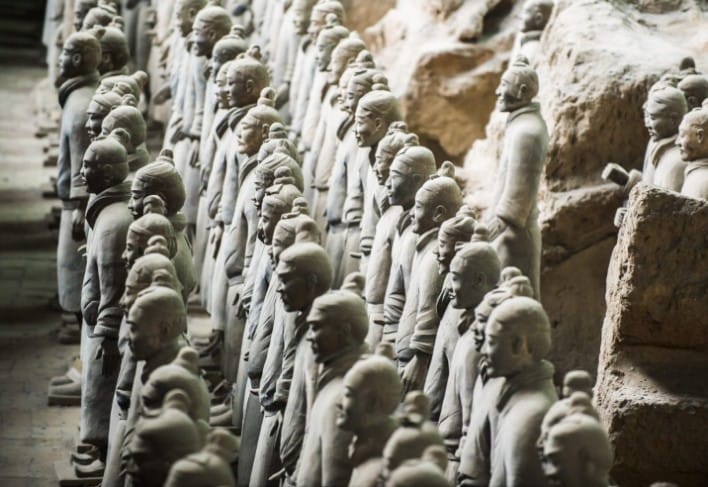
Source: Getty Images/ studioEAST
There were also several non-lethal weapons, like cone-shaped spears known as shus, utilized during ceremonial events. Many of these weapons can be viewed in museums today.
Two of the Largest Statues Were Found in Pieces
In addition to the terracotta sculptures, at least two bronze statues could be found alongside Emperor Qin. These two bronze chariots were uncovered in 1980, west of the emperor’s burial site.
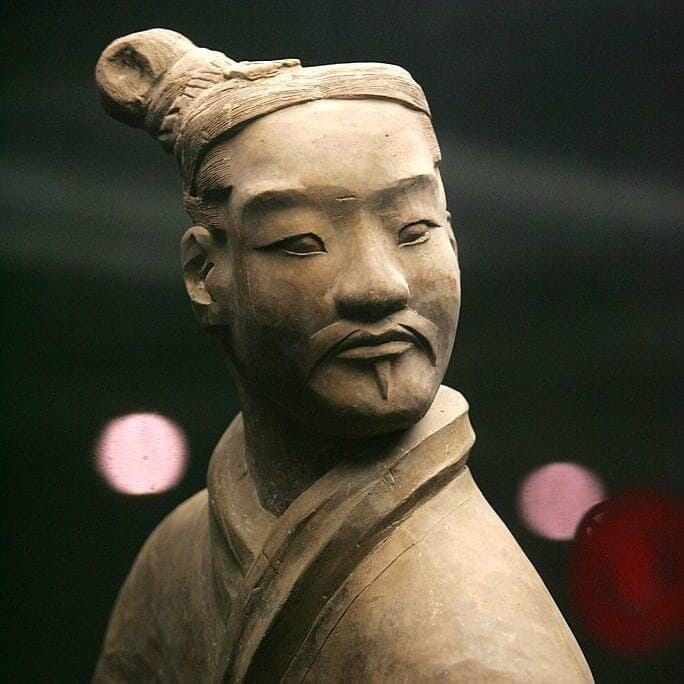
Source: Getty Images/ China Photos
Unfortunately, when they were found, they were already shattered into thousands of individual pieces. Luckily, restorers were able to recreate them over eight years. These are currently the largest bronze chariots in all of China.
Qin’s Statues Were Made to Look More Intimidating
While often described as “life-sized,” the statues in Emperor Qin’s tomb are somewhat taller than the average person. The majority of the figures measure 5’8,” with the tallest reaching 6’2”.
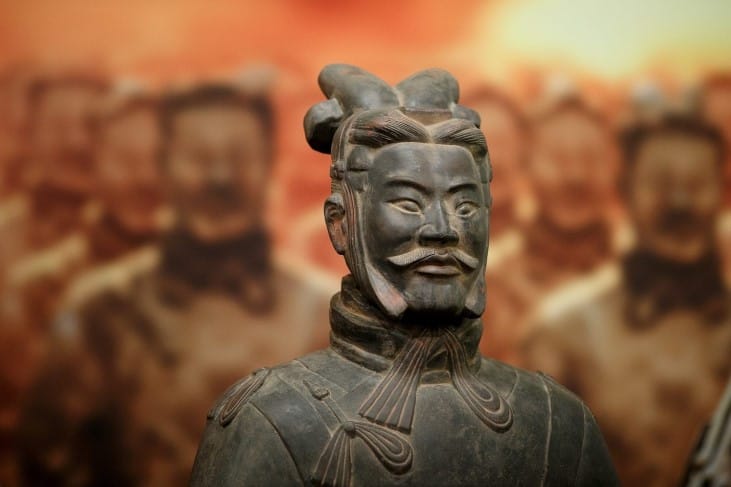
Source: Getty Images/ Pablo Blazquez Dominguez
This does not necessarily mean that people in ancient times were taller than they are today, as historical records indicate they were of similar height. Rather, the larger size of the tomb’s sculptures was likely intended to make them appear more imposing and intimidating.
Some Are Now Calling the Tomb the “Eighth Wonder of the World”
Now, it has made its way onto the list of the seven wonders. Qin Shi Huang’s burial site is widely regarded as the most extensive and intricate tomb ever constructed.

Source: Alamy
In September of 1987, French President Jacques Chirac referred to it as the “Eighth Wonder of the World.” In 1996, it was officially recognized as a UNESCO World Heritage Site, solidifying its place in history as an incredible feat of human engineering.
Qin Was Only Able to Construct the Tomb Thanks to China’s Unification
The colossal tomb of Qin Shi Huang is a testament to the unification of China under his rule. Prior to constructing his tomb, the emperor commanded thousands of workers to build parks, palaces, and more.
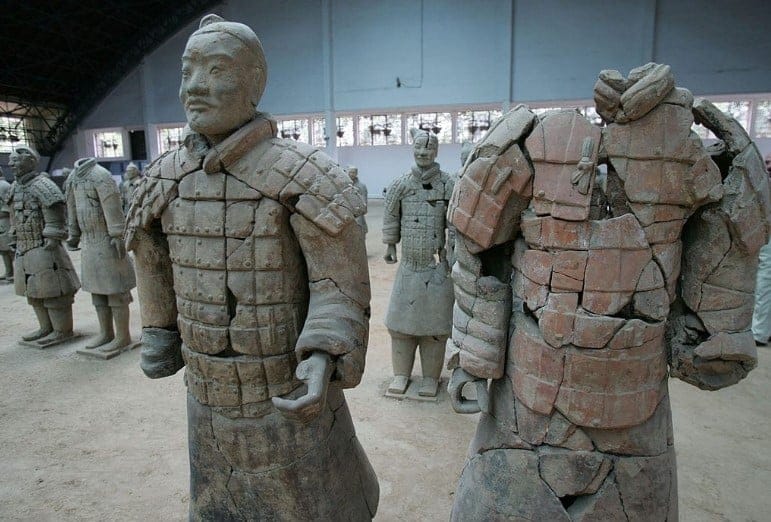
Source: Getty Images
Many of these projects remain undiscovered to this day. While some of the tomb’s features have been uncovered, such as the bronze sculptures and terracotta warriors, others are still mysteries of the deep earth.
To Truly Uncover the Tomb Properly Could Take Centuries
The scale of the tomb is so vast that only a fraction of it has been excavated by archaeologists. Despite 50 years of digging, experts say there are still 8,000 statues buried underground.
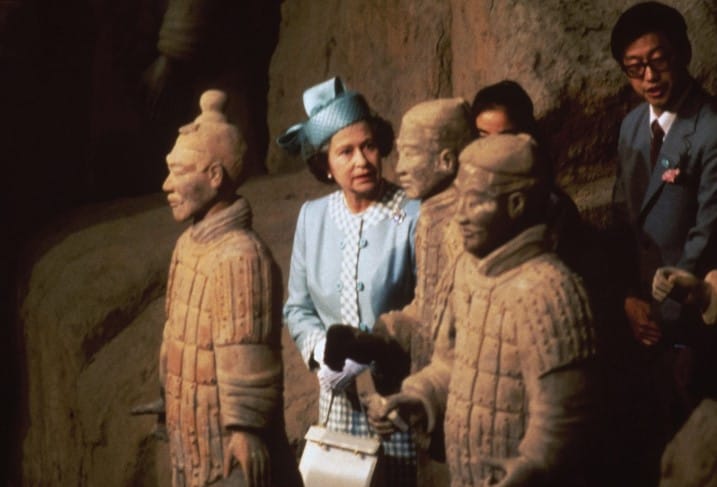
Source: Getty Images/ Hulton Archive
It’s possible that future excavations could continue for centuries, but the extent of these efforts will depend on the Chinese government. Of course, historians are eager to uncover more of the tomb’s secrets.
Many Artifacts are In the Repair Phase
Repairing the artifacts found in the tomb was a challenging task. Unfortunately, many of them were damaged by robbers who had broken into the tomb to vandalize and steal.
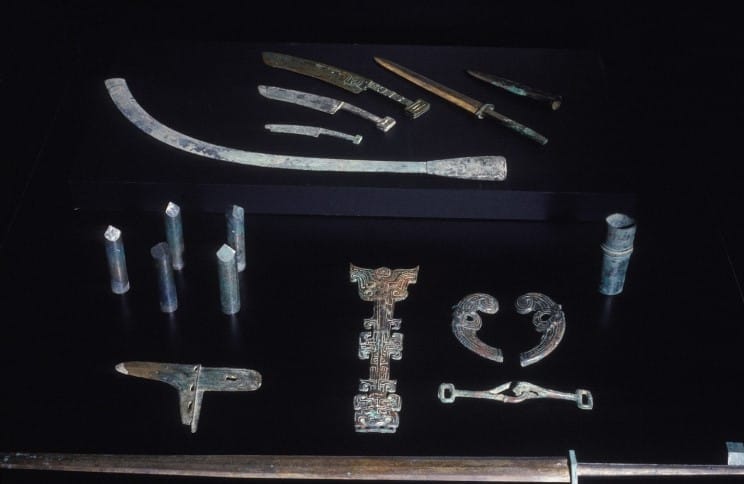
Source: Getty Images
The restoration process involved reassembling the pieces, polishing, repainting, and attaching lost limbs to the sculptures. Many of these restored artifacts can now be seen in museums worldwide, enabling historians to study them in detail.
Qin’s Dynasty Collapsed Shortly After His Death
After Qin Shi Huang’s death, the construction of his tomb continued. However, the reign of his younger son, Qin Er Shi, was plagued by rebellions, and the dynasty eventually collapsed.
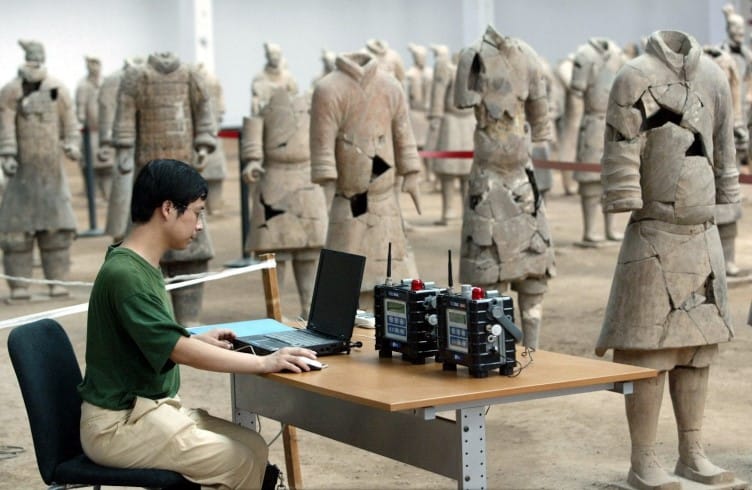
Source: Getty Images/ China Photos
Consequently, the construction of the tomb came to a halt, leaving it unfinished. Still, it remains the largest necropolis ever discovered, surpassing even the Pyramids of Giza in size.
Nowadays, You Can See the Wonders from the Tomb at a Local Museum
Xi’an locals established the Terracotta Warriors and Horses Museum to showcase the sculptures to visitors. It’s really cool that the museum ticket grants access to a portion of the mausoleum.
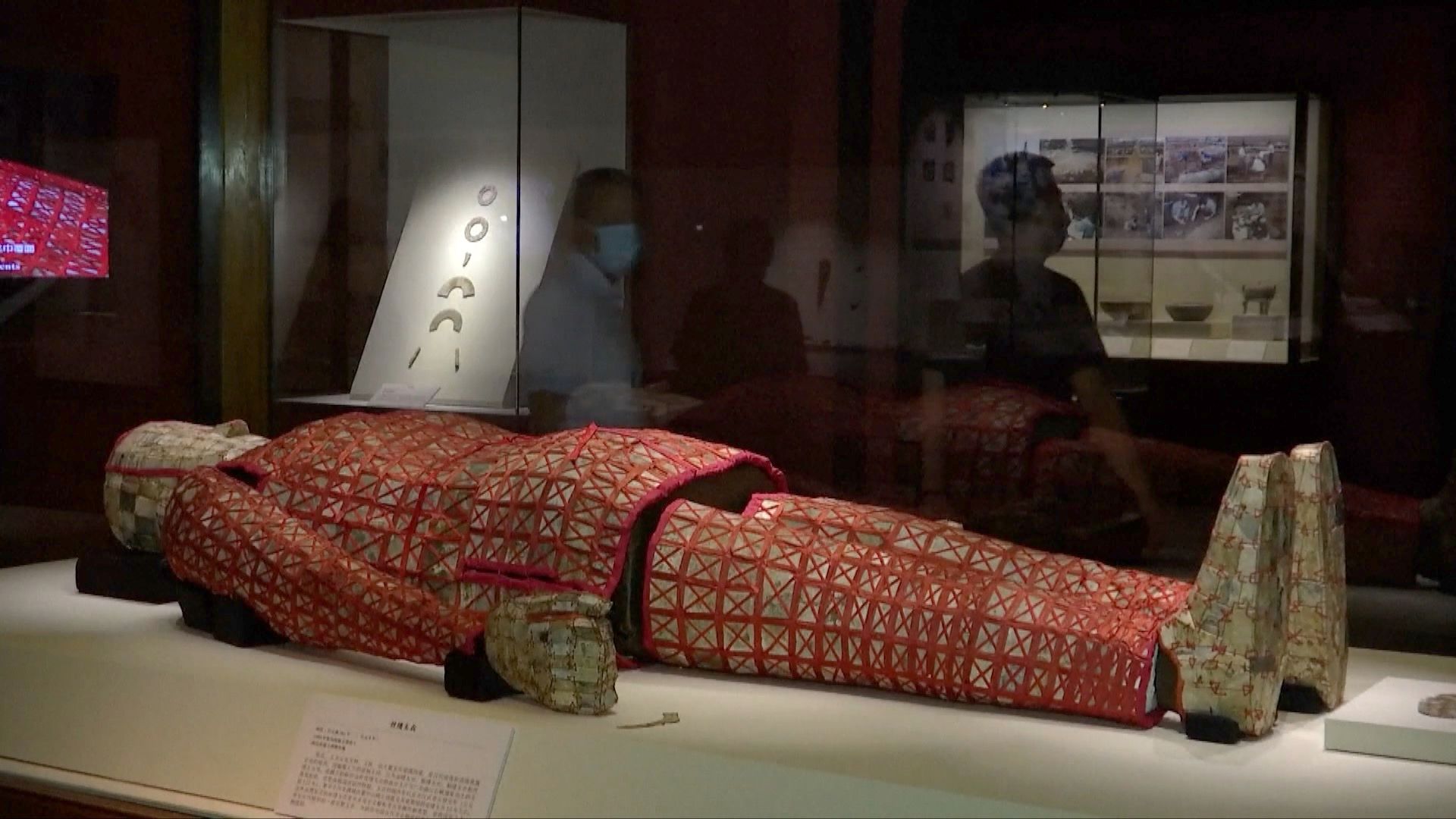
Source: Imgur
For those unable to travel, various international museums, such as the British Museum, exhibit artifacts from the mausoleum. Many important figures, from American presidents to British royalty, have visited the museum.
